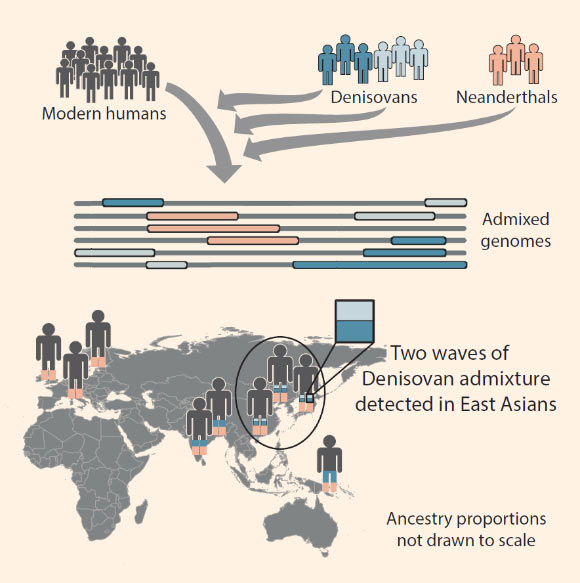Our ancestors not only mated with Neanderthals but also another mysterious ancient species of hominins, the Denisovans, on two separate occasions, according to a new study.

In a paper published on Thursday in the journal Cell, scientists at the University of Washington showed that more than 50,000 years ago, the now extinct subspecies of human, Denisovans, lived in Asia and apparently co-existed with modern humans.
READ MORE: Neanderthals dined on wooly rhinos, used plant-based medicine, study says
The study also said the interbreeding between modern humans and Denisovans happened in two separate instances.
“This is a breakthrough paper,” David Reich, who studies ancient DNA at Harvard University told the Washington Post. “It’s a definite third interbreeding event,” he said.
Denisovans, who are close cousins of modern humans and Neanderthals, were first described in 2010 after the discovery of a finger bone fragment of a young woman who lived about 41,000 years ago, found in a Siberian cave.
The DNA extracted from the fragments showed it was neither Neanderthals or modern human — it was Denisovan. The genome also suggested that the species lived among and interbred with the ancestors of some modern humans.
Since the discovery, scientists have been seeking DNA and looking for interbreeding evidence between the two species. This is because researchers had already found a lot of evidence saying Homo sapiens interbred with Neanderthals multiple times.
As a result, in 2014 it was found that five per cent of the Denisovan genome lives on in parts of some Australian people.
But now the study has identified surprising new details about the interbreeding between Homo sapiens and Denisovan — that different populations of the two hominins interbred multiple times.

To find this, the team of scientists examined more than 5,500 genomes of modern humans from Europe, Asia and Oceania, looking for DNA from the ancient Denisovans. The researchers found that some people in East Asian, such as China and Japan, also carry the Denisovans DNA.
The researchers found that Oceanian people, notably indigenous peoples of New Guinea, had the most Denisovan DNA. East Asians were a distant second, with about 0.2 per cent.
WATCH: Ancient cat DNA reveals relationship to humans

But the researchers found the East Asian DNA also held two genetically distinct groups of Denisovan genes living on the continent that were somewhat geographically distant.
Going forward, the team plans on studying more Asian populations and others throughout the world, including in North America and Africa.




Comments